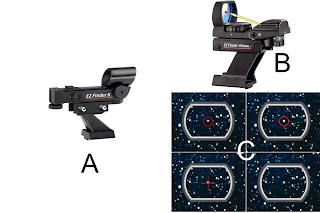
Each month I will describe sights of interest in the night skies of South Carolina. These sights will be broken down into three sections; what you can see with the naked eye, with binoculars, and with a small telescope. The best time to view the night sky is at and around the times when the Moon is not visible, what is known as a New Moon; which will occur this month on December 16th. For December, your best viewing nights will be from December 6th through December 22nd. The Star chart below is set for Florence, SC on December 15th at 9 pm.

Meteor Showers
The November Leonids were a washout. Not only did the Leonids give a poor show, in South Carolina there were not enough meteors to even call it a meteor shower. I took a personal count of only 4 meteors per hour. To any of my readers who felt a great let down, I strongly encourage you to check out the Geminids meteor shower in December. There are only three “major” meteor showers each year: The Leonids in November, the Perseids in August, and the Geminids in December. Of the three, the Geminids get the least attention. My personal observations have shown that the Geminids are the most reliable; never overly impressive, but seldom a washout. The Geminids should peak between 1 am and sunrise on December 14. With the Geminids, it is also possible to have a good shower the night before and the night after the peak. So if your schedule work/school permits, give it your last try for 2009 meteor showers. Note: I define a good Geminids shower has 60 or more meteors per hour; good luck to us all.
Mercury

If you have a telescope, you may be tempted to view Mercury, but please do so only after the Sun has completely set. Never ever turn your telescopes anywhere in the direction of the Sun; to do so would result in severe eye damage. If you do see a telescopic view of Mercury, it will never be seen as a disk, because like Venus, it is between us and the Sun. Below is a size comparison of Mercury and the Earth.

Christmas Shopping

To all my readers: Have a wonderful Christmas and a Happy New Year.

Naked Eye Sights: The Geminids meteor shower. The planet Mercury. Enjoy the arrival of winter’s favorites: Orion returns to dominate the sky for the next several months. Leading Orion is the wonderful Pleiades/Seven Sisters asterism. Following Orion is the brightest star in our nighttime sky, Sirius/ The Dog Star. The striking Northern Cross/Cygnus will slowly set in the northeast this month. The Cassiopeia asterism in the northeast doesn’t know if it wants to be a W or an M this month.
Binocular Sights (7 to 10 power): The must see binocular sights for a clear December night are: The Pleiades star cluster in Taurus, the Double Cluster in Perseus, the Orion Nebula in the center of his sword, also try to find all three open star clusters in the constellation Auriga; M36, 37, and 38. Hope for the perfect night to view the Andromeda Galaxy. Finally, if you just like to “look at stars” with your binoculars, there are two great places to visit this month. First scan the “V” asterism in Taurus (between Orion and the Pleiades). This area is filled with stars associated with a broad open star cluster, the Hyades. The Hyades is the closest star cluster to Earth, and contains 300-400 main stars. Next visit the constellation Perseus high in the northeast. The brightest star in Perseus is Mirfak. Using Mirfak as your central point, scan the sky around this star, and you will find a wonderful gathering of young stars. This area is known as the Perseus Association; enjoy.






































